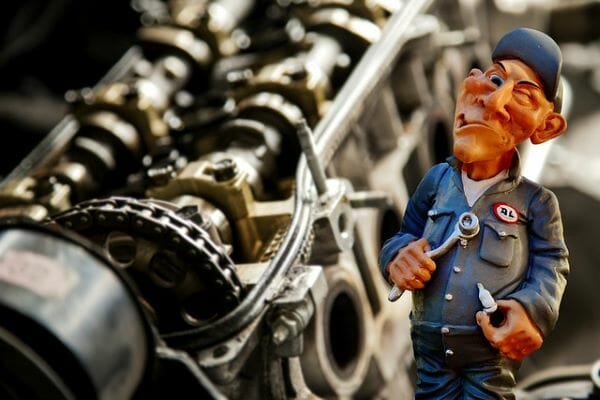It’s not easy keeping your car running smoothly. If you want your vehicle to be reliable, it’s important to provide regular maintenance. Part of the typical maintenance procedures involves learning how to inspect car belts and hoses. A quick inspection can prevent you being stranded on the side of the road when something breaks.
Let’s take a closer look at the best way to inspect car hoses and belts.

How to Inspect Coolant and Heater Hoses
Hoses are a necessary component to the car’s cooling system. They are manufactured from flexible rubber that absorbs vibrations as coolant flows from the engine to the radiator and back again. Heater hoses run from the firewall of the vehicle to the engine. With either type, there’s a lot of pressure and extreme temperatures occurring. Over time, these rubber compounds can break down.
Most frequently, the upper radiator hose fails first. Yet, it’s also possible for the water pump bypass hose (on some vehicles) and the outlet heater hose to fail.
If a hose were to fail while driving, coolant would pour out of the break. To avoid this, you want to regularly inspect the hoses. Here are some simple steps to follow.
- Check the coolant reservoir to ensure there’s enough fluid. There are marks indicating where the fluid should be when the system is hot and cold.
- With the engine cool, squeeze the hoses slightly with your thumb and forefinger. Squeeze near the clamps, as this is where degradation tends to occur. If the hose is in good shape, it should remain firm, yet still pliable. If it is soft or mushy, it should be replaced.
- Inspect the hoses for any sign of damage – bulges, cracks, nicks, etc. If you notice any defect, the hose should be replaced.
Don’t ever take off the radiator cap while the engine is still hot. Coolant is under pressure when the engine is hot and you can get seriously burned.
How to Inspect Car Belts
Belts are also susceptible to damage over time. Most cars contain a multi-grooved serpentine belt, responsible for driving the power steering pump, air conditioning compressor, water pump and alternator. Older models may have V-belts driving the accessories. Either way, you want to regularly inspect the belts because they wear down over time. A snapped belt is going to lead to serious issues.
Here are some tips to consider.
- Inspect the belt for cracks, splits and fraying. Replace at the first sign of damage.
- Look for glazing on the belt. A glazed belt can crack and slip.
- Twist the serpentine belt to look at the other side. It could be missing chunks that you can’t see.
If you hear a high-pitched chirping or whining sound, that’s likely an issue with the automatic tensioner. These are needed to keep the belts tight. Without the right amount of tension, a belt slips, generates more heat and fails to operate the accessories as designed.
When in doubt, check with a professional mechanic for maintenance and repair support.
Leave a Reply